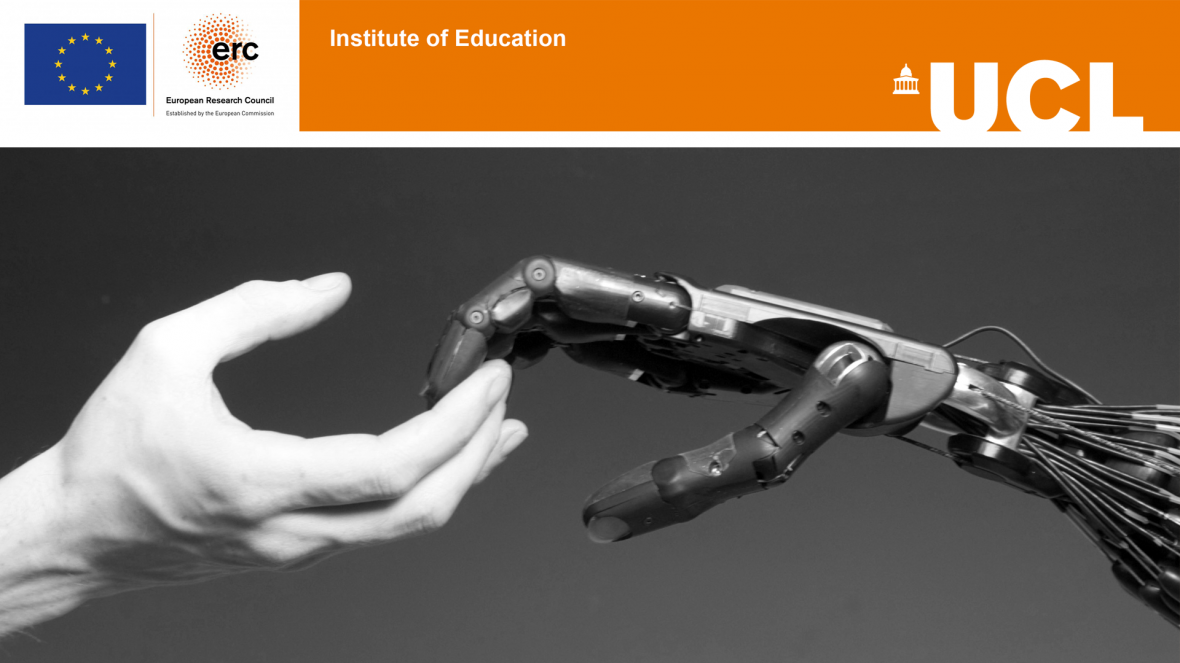
Image taken at Ocean of Air Exhibit at the Saatchi Gallery
This case study focuses on exploring the notions of ‘virtual’ touch – in other words, the conceptualisation and experience of ‘touch’ in environments, such as virtual reality, pseudo haptics and mediated touch technologies. These environments raise interesting questions around the materiality of touch, how the materiality of interaction and communication changes in these digital contexts, and the kinds of ‘touch’ sensations that people sense or experience.
In this case study we are exploring the following questions:
- What is touch in this space: where is – or isn’t – touch happening? What is gained or lost?
- What sense/perception of touch does the experience elicit? How do people interpret – or make sense – of these touch experiences?
- What does this mean for communication? What forms of communication are taking place/ are possible?
- What is the relationship between touch and gesture; how does gestural interaction with virtual objects map to everyday experiences of touch?
- Multisensory relationships: What other resources do people draw on (e.g. context, visual) to interpret touch experiences?
To do this we have undertaken a series of sub-case studies that include:
Interviews with experts: semi-structured interviews with experts working in the realm of ‘touchless’ technologies, such as, virtual reality (VR), augmented reality (AR) and mid-air haptics. These include academics and researchers, technical developers and designers, with the aim of exploring, for example, how they talk about touch in this context; how is touch enabled; where/ when does touch take place; what opportunities does technology provide; to what degree do they think this might change/ remediate touch experience? This research shows the growing value and significance of touch in virtual spaces, and reveals particular ways in which touch is talked about implemented and conceptualised, and contributes to our understanding of how the coneptualisations of touch in VR raise socially orientated questions for design.
Related publications: Price, S., Jewitt, C. & Yiannoutsou, N. (2021) Conceptualising touch in VR. Virtual Reality. https://doi.org/10.1007/s10055-020-00494-y
Virtual Reality experiences with participants: enables us to examine touch experiences in VR in more depth, exploring the sense of touch in these environments from a more “subjective” perspective to gain insight into how different users perceive touch in different kinds of VR experiences, and the role ‘touch’ plays in shaping their experience. Users engaged with two purposefully selected experiences, available on Oculus Rift, on the basis of touch being a central feature in the interaction context, with a focus on ‘real-world’ touch experiences (handling objects, climbing) and a range of touch actions (e.g. gripping, rotating, stretching): Hold the World and The Climb. Studies contribute to our understanding of what counts as virtual touch and how touch is used to make meaning in VR environments; and show how both touch connections and disconnections emerged though material forms of tactility (the controller, body positioning, tactile expectations) and through ‘felt proximities’ and the tactile-kinaesthetic experience thus shaping the sense of presence.
Related publications: Jewitt C. Chubinidze, D., Price, S., Yiannoutsou, N. & Barker, N. (2021) Making sense of digitally remediated touch in virtual reality experiences. Discourse, Context & Media https://authors.elsevier.com/c/1cn-Z7suQFmmuH
Price, S., Jewitt, C., Chubinidze, D., Barker, N. & Yiannoutsou, Y. (2021) Taking an extended embodied perspective of touch: Connection-disconnection in iVR. Frontiers inVirtual Reality, 2:642782 https://doi.org/10.3389/frvir.2021.642782
Virtual Reality video walkthroughs: involves the analysis of video walkthrough’s of VR experiences, enabling us to explore where touch comes into the use of various types of controllers, both with and without haptic feedback. This analysis provides insights on a wide range of contexts of use of haptics in VR (entertainment, learning, social VR, visual impairment,) and looks at the touch interactions of specific types of users (mainly gamers and tech journalists).
Virtual Reality workshop: 19 attendees took part in an interdisciplinary workshop, which aimed to explore the conceptualisation and experience of ‘touch’ in virtual environments including virtual reality, pseudo haptics and mediated touch technologies. Participants from academia, industry, arts and design, together with the InTouch research team used current state-of-the art virtual touch to speculate on ‘virtual touch’ futures. Hands on experiences of virtual touch environments, fiction and film, thematic grounding and helped engage with questions of the materiality of touch, the kinds of ‘touch’ sensations that people sense or experience in the virtual landscape, and the implications for future design and use potentials.

